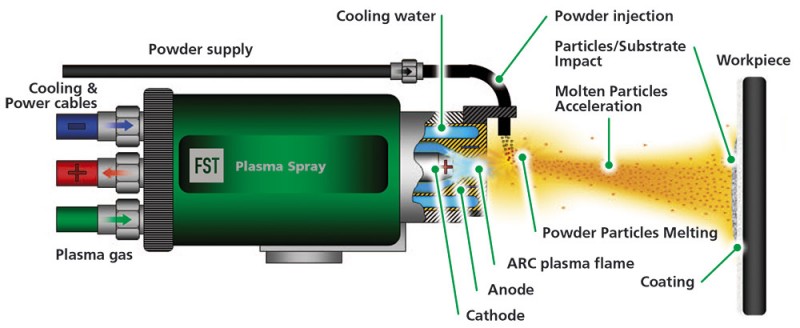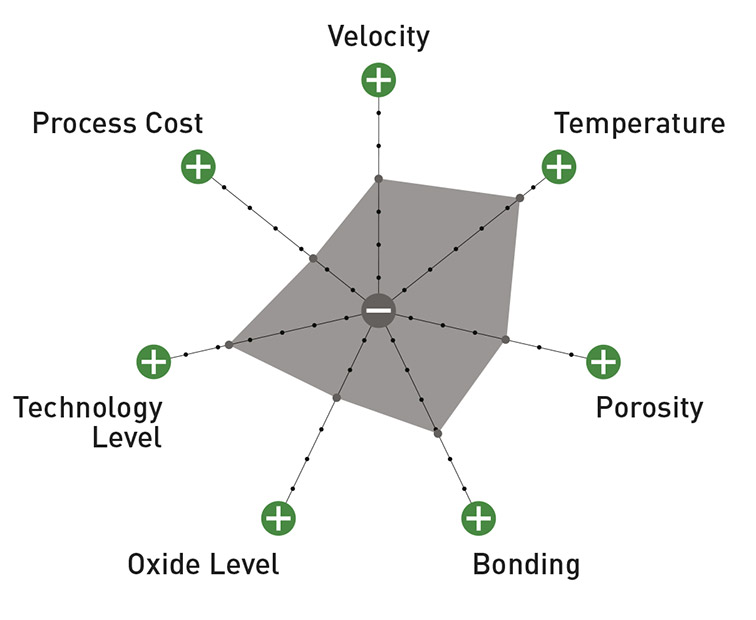

Atmospheric Plasma Spray (APS) Systems are the most versatile and flexible thermal spray process due to its ability to spray a wide range of materials such as most metals, ceramics and alloys onto many different substrate materials such as plastics, glass, metals, ceramics and composite materials. Also, a broad range of powder particle sizes can be used. Benefits of APS include resistance against heat, oxidation and wear, corrosion protection, clearance control for abrasives and abradables, temperature management as well as electrical resistivity and conductivity. Thus APS can be used for a wide range of applications across industries.
Typical coatings
- Ceramics
- Carbides & Cermets
- Iron, Nickel & Cobalt based alloys
- Abradables
Main applications
- Wear resistance, Sliding, Abrasive, Erosion, etc
- Corrosion resistance
- Thermal barriers
- Combinations
What is plasma spray?
The plasma spraying process involves the latent heat of ionized inert gas (Plasma) being used to create the heat source. The most common gas used to create the plasma is argon. This is referred to as the primary gas. (See What is Plasma).
Argon flows between the electrode and nozzle. A high frequency or high voltage alternating electric arc is struck between the nozzle and the electrode, which ionizes the gas stream. By increasing the arc current, the arc thickens and increases the degree of ionization. This has the effect of increasing the power and also, due to the expansion of gas, an increase in the velocity of gas stream.
With a plasma created by argon only it requires a very large arc current (Typically 800 to 1,000 amps) to create sufficient power to melt most materials. With this level of arc current the velocity may be too high to allow materials with a high melting point to be made molten. Therefore, to increase the power to a level sufficiently enough to melt ceramic materials it is necessary to change the thermal and electrical properties of the gas stream. This is generally done by adding a secondary gas to the plasma gas stream (usually Hydrogen).
Once the appropriate gas stream has been established for the material being sprayed, the feed stock (material in various powder forms) is injected into the gas stream.
Read about other processes: